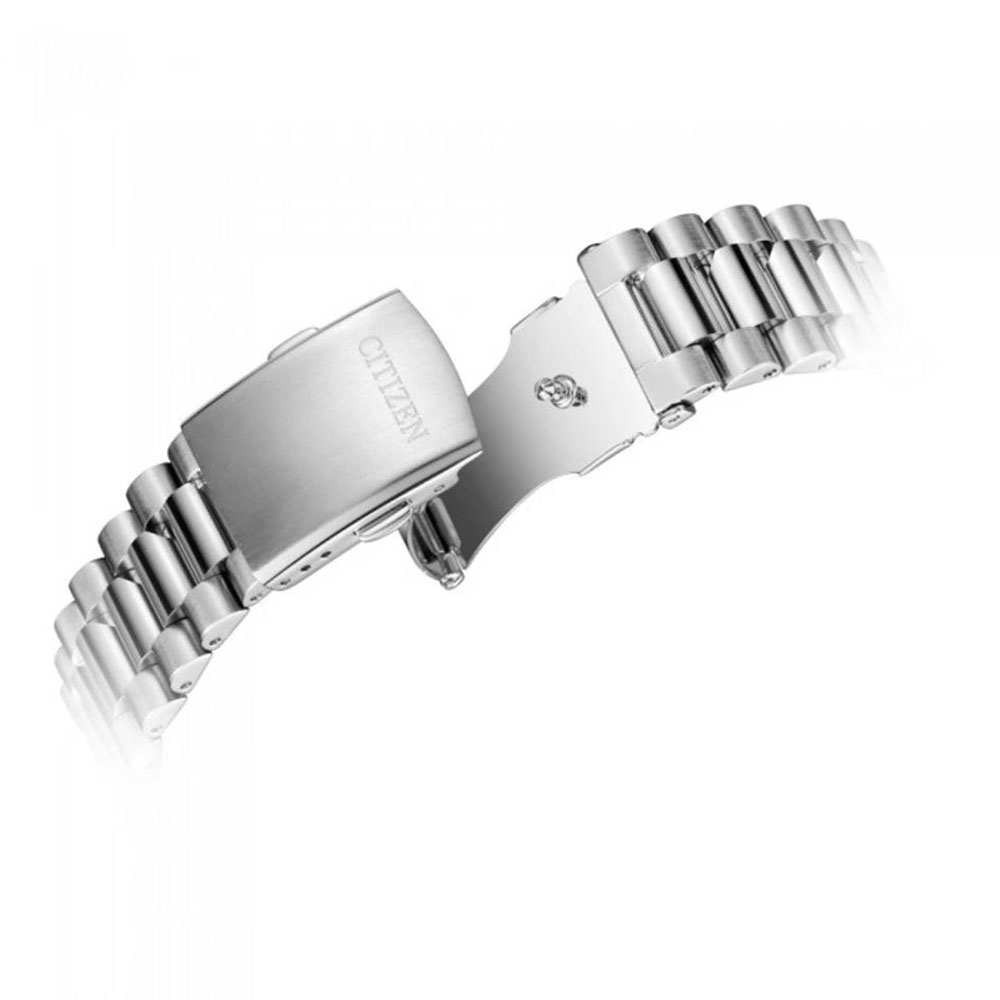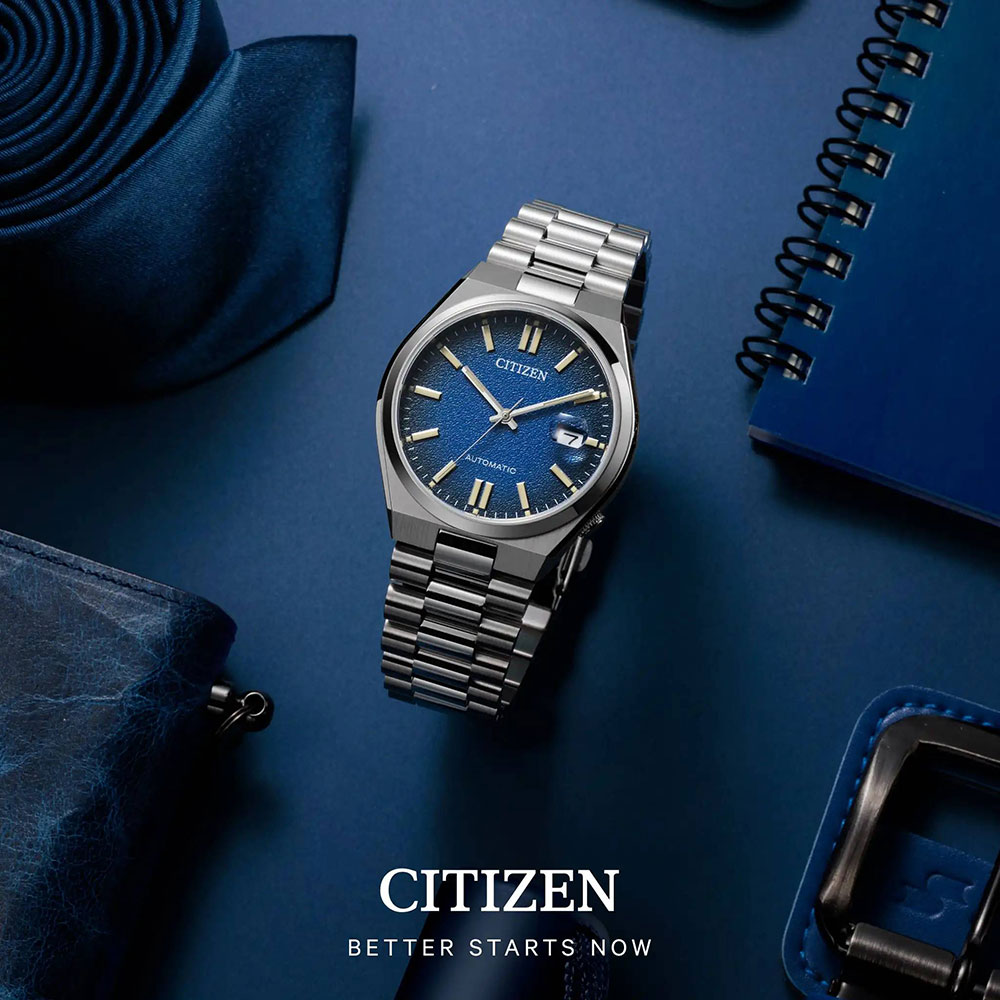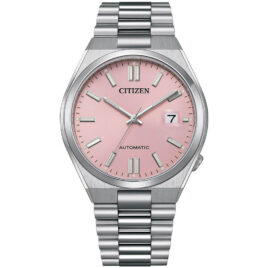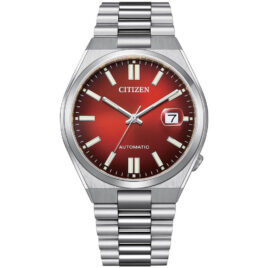Description
CITIZEN Mechanical NJ0151-88L Specifications
| Feature |
| ||
|---|---|---|---|
| Driving system | Automatic | ||
| Caliber Number | 8210 | ||
| Case material | Stainless steel | ||
| Case back | See-through | ||
| Band type | Bracelet | ||
| Band material | Stainless steel | ||
| Band color | Silver tone | ||
| Band width | 20 mm | ||
| Clasp | Fold over with push button | ||
| Dial color | Turquoise blue | ||
| Glass material | Sapphire crystal | ||
| Hands | Silver tone hour, minute, second hand | ||
| Dial markers | Luminous batons indexes with double batons indexes at 6 and 12 o’clock position | ||
| Second markers | Minutes markers around the outer rim | ||
| Lumi Brite | Hands and indexes | ||
| Bezel | Fixed silver tone stainless steel | ||
| Crown | Screw down at 4 o’clock position | ||
| Calendar | Date display at 3 o’clock position with magnifier | ||
| Vibration | 21,600 vibrations per hour (6 beats per second) | ||
| Drive duration | Power reserve 42 hours | ||
| Water resistance | 5 bar water resistance (50 meters / 165 feet) | ||
| Size | Diameter 40 mm x Thickness 11.7 mm | ||
| Lug to lug | 45 mm | ||
| Weight | 138 g |
CITIZEN Mechanical NJ0151-88L Features
Minimal, modern and unpretentious. This mechanical watch from the NJ015 series powered by CITIZEN’s 8210 movement combines a strong and stylish appearance designed for today’s lifestyle. The watch features a youthful and subtle turquoise blue dial and a date display encased in a sapphire crystal with a date magnifier and also has a skeleton case back showcasing the movement of the watch.
- 21 jewels
- Date display
- Approximately 42 hours power reserve
About CITIZEN Mechanical NJ0151-88L
History of Citizen
The company was founded in 1930 by Japanese and Swiss investors. It took over Shokosha Watch Research Institute (founded in 1918) and some facilities of the assembly plant opened in Yokohama in 1912 by the Swiss watchmaker Rodolphe Schmid.
The brand Citizen was first registered in Switzerland by Schmid in 1918 for watches he sold in Japan. The development of this brand was supported in the 1920s by Count Gotō Shinpei with his hope that watches could become affordable to the general public. The growth of Citizen until World War II relied on technology transfer from Switzerland.




















